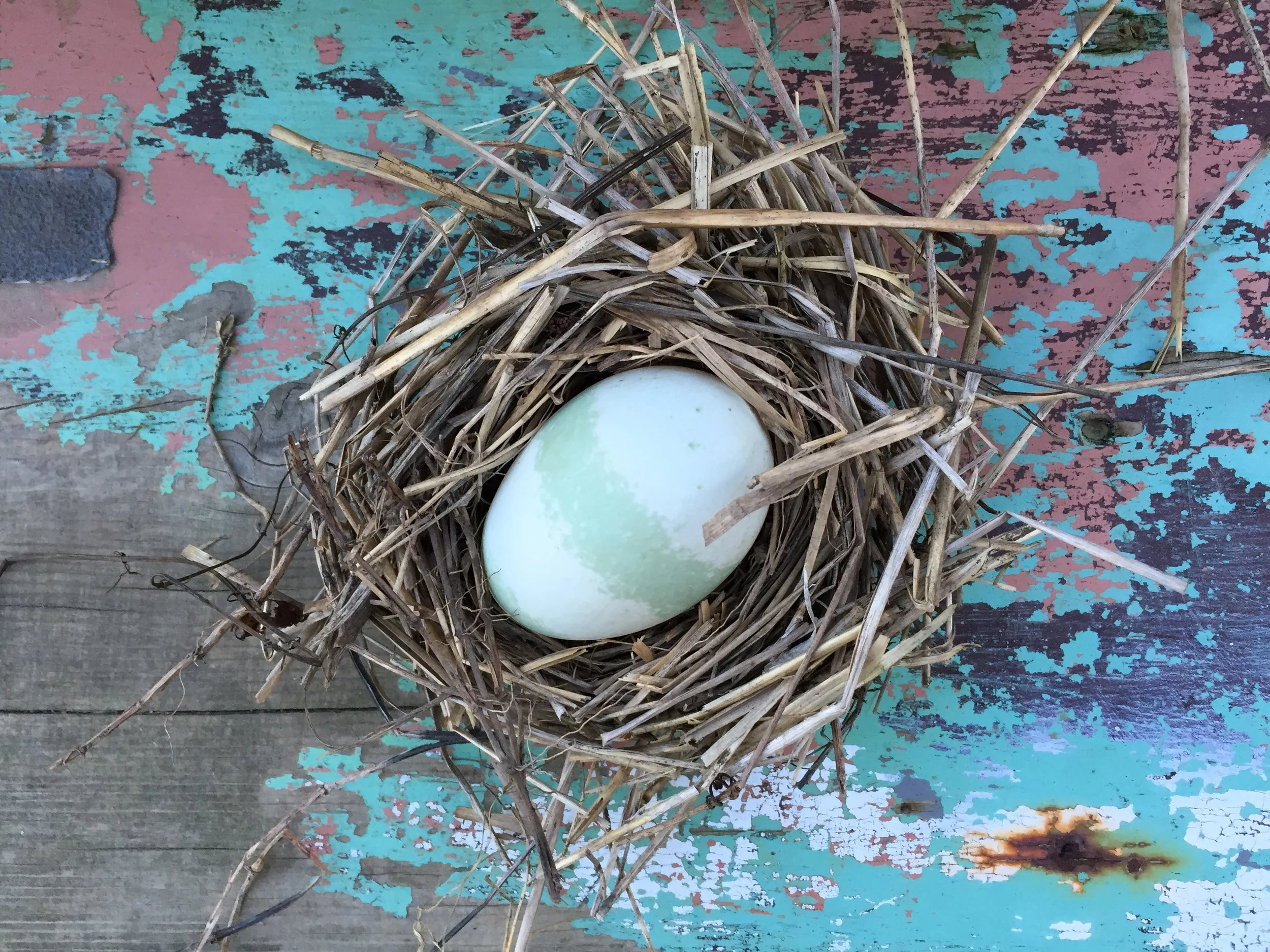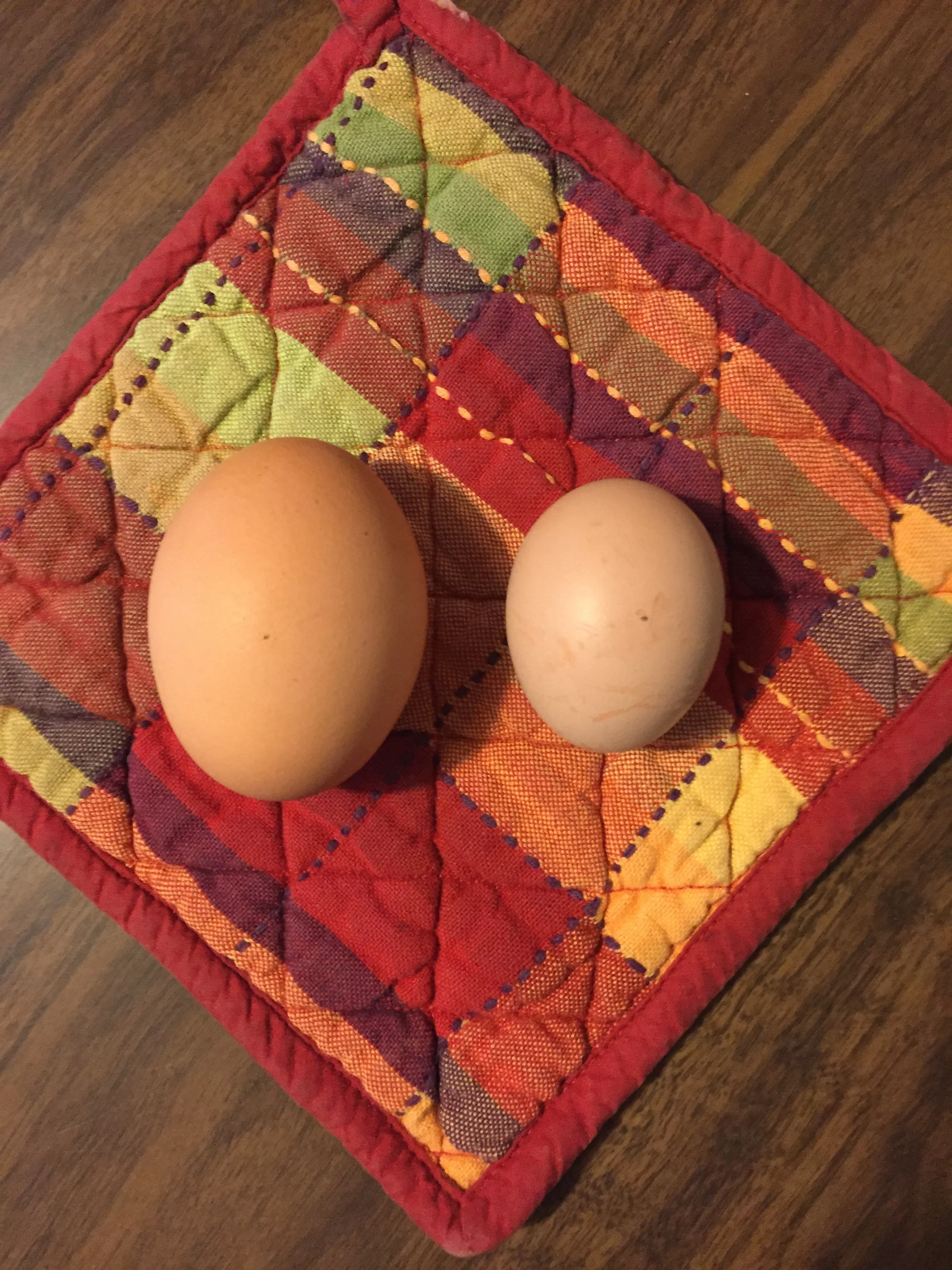Livestock journal: pullet eggs and more
Corn that grows to the same height. Soybeans that ripen at the same time. Eggs washed and graded fit in stackable cartons. Uniformity allows a level of efficiency that makes food widely available.
Our birds are a wide variety of breeds, ages, and, at the moment, species. This makes for many things, but uniformity and efficiency aren't among them.
White Leghorn eggs, the light brown from Wyandottes and the dark from the local brown "egg layer" mix (Rhode Island Red and something else I think).
An egg we found in the duck enclosure reminded me that even your old birds can surprise you.
Our first striped egg. Duck...but which one? Arthur, our only runner duck who is of age, lays a green egg, but this would be his second for the day. (Michael named him as a duckling.) All our other ducks lay cream or tan eggs.
Our new chickens have begun to lay as well. They have "pullet eggs," which are wee things.
In this household you get to estimate how many eggs REALLY go into a "3 egg" recipe: 2 duck, 3 Leghorn, or 6 pullet!
And speaking of wee ones:
Our oldest and newest household members: may they be as non-uniform and inefficient as they care to be. We love them!



